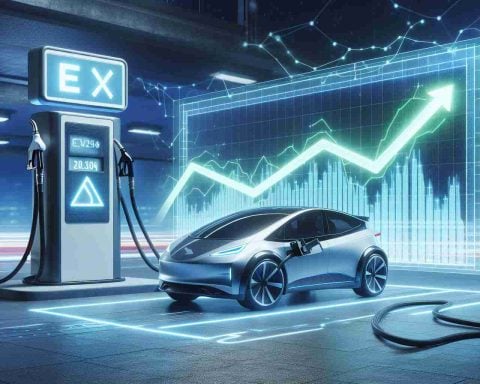As the electric vehicle (EV) industry accelerates, a groundbreaking technology is on the horizon: dynamic wireless charging. Imagine a world where your electric car charges itself while cruising down the highway. This technology, still in its experimental phase, could redefine the EV landscape, making long-distance journeys more convenient and efficient.
Dynamic wireless charging involves embedding coils beneath road surfaces, transmitting electricity to vehicles passing above. This innovation promises to reduce the need for frequent stops at charging stations, addressing one of the main challenges facing EV adoption: range anxiety. Several countries, including Israel and Sweden, are already testing pilot projects, with promising results. These tests demonstrate the potential for significant reductions in charging times, increased convenience, and a broader appeal for electric vehicles.
The economic and environmental impacts of this technology cannot be overstated. Reduced dependency on large charging stations could lower infrastructure costs and enhance the sustainability of transportation networks, complementing renewable energy sources. Additionally, self-charging roads could pave the way for seamless integration with autonomous vehicles, further revolutionizing how we commute.
As this technology evolves, potential challenges include the need for standardized regulations and systems across countries, potential maintenance complexities, and initial high implementation costs. However, the promise of a more sustainable, efficient future for electric vehicles makes dynamic wireless charging an electrifying development to watch. As researchers and companies push the boundaries, the age of wirelessly charged highways seems closer than ever.
Dynamic Wireless Charging: The Future of Effortless Electric Vehicle Journeys
As the electric vehicle (EV) market continues to grow rapidly, a transformative technology known as dynamic wireless charging is capturing global interest, promising to redefine the driving experience. Envision your EV powering up while cruising seamlessly down the highway, liberating drivers from the current limitations of fixed charging stations. This innovation, though still at the experimental stage, offers the potential to overcome one of the most significant barriers to widespread EV adoption: range anxiety.
How Dynamic Wireless Charging Works
Dynamic wireless charging involves the strategic embedding of electrical coils beneath road surfaces. These coils transmit electricity to specially equipped vehicles that pass over them, using principles akin to wireless phone charging but on a much larger scale. This setup could drastically decrease the need for frequent stops, thus enhancing the efficiency and appeal of long-distance EV travel.
Economic and Environmental Benefits
The implications of this technology extend beyond convenience. Incorporating dynamic wireless charging is expected to reduce reliance on expansive and costly charging infrastructure, potentially lowering transportation network costs. From an environmental perspective, this technology aligns seamlessly with renewable energy advancements. By facilitating continuous charging, it supports EVs that can better integrate with solar and wind power sources, promoting a greener, more sustainable transportation future.
New Insights and Innovations
Countries like Israel and Sweden are leading the charge by testing pilot projects with this technology, achieving encouraging results that hint at significantly shorter charging times and greater accessibility to electric vehicles. Furthermore, the emergence of wirelessly charged roadways could be instrumental in advancing autonomous vehicle technologies by ensuring they are always powered and operational.
Challenges and Considerations
Despite its promise, dynamic wireless charging faces several challenges. The need for standardized regulations and compatibility across different countries and vehicle manufacturers is crucial to avoid fragmented systems. Furthermore, the initial implementation may involve high costs and complex maintenance requirements. These challenges must be addressed to fully leverage the benefits of this groundbreaking technology.
Predictions for the Future
As technological and regulatory hurdles are gradually overcome, experts predict that dynamic wireless charging could significantly transform urban infrastructure within the next decade. The technology not only holds the promise of accelerating EV adoption but also opens the door to revolutionary changes in how we view and utilize transportation systems worldwide.
For more insights into the future of electric vehicles, visit Tesla.
Dynamic wireless charging is not merely a futuristic concept but a tangible evolution in the EV industry. Its potential to make electric vehicle journeys more convenient, cost-effective, and environmentally friendly marks it as a critical development to watch in the coming years.











